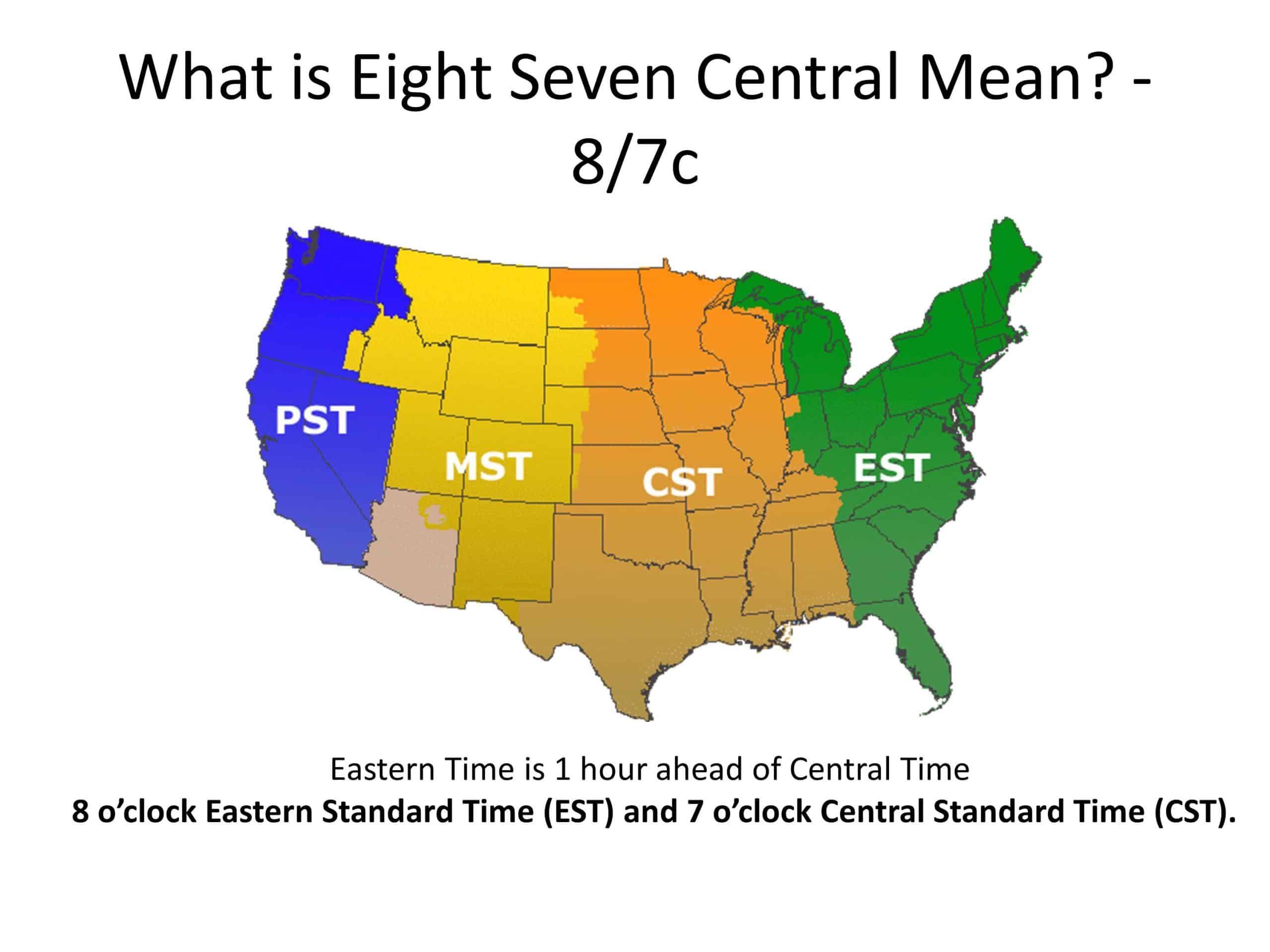Eight seven central is a term used to refer to the time of day in different time zones. Eight seven Central, or 8/7c, stands for 8 o’clock Eastern Standard Time (EST) or 7 o’clock Central Standard Time (CST).

Eight Seven Central can be used as shorthand for EST and CST or refer specifically to one or the other, depending on context.
Eight Seven Central is often used for television programs or other events broadcast across multiple regions. For example, if a show airs 8/7c on Tuesday night, it will air at 8 PM EST in the eastern part of the United States and 7 PM CST in the Midwest and western states. This ensures that people in all aspects of the country can watch live broadcasts of the same program simultaneously.
Sometimes, broadcasters may provide separate times for Mountain Time and Pacific viewers. This is usually written as 8p/7m (8 Pacific Standard Time, 7 Mountain Standard Time) or 8/7m (the reverse). Broadcasters do this so that viewers in those regions can watch their programming block without shifting their schedules around.
Eight Seven Central is not limited strictly to television broadcasts; it can also be used for other events, such as sports games or conventions that span multiple time zones. Using eight seven central to schedule such circumstances, it becomes easier for people from different regions of a country — or even different countries — to come together and participate in activities simultaneously.
Ultimately, eight seven central refers to two distinct points: 8 o’clock Eastern Standard Time and 7 o’clock Central Standard Time. Using this term instead of listing two specific times, broadcasters can simultaneously accommodate viewers throughout several time zones.
Eastern Time (ET) vs. Central Time (CT)
Eastern Time (ET) and Central Time (CT) are different time zones in the United States. Though many people are familiar with their differences, few understand why there is a one-hour gap between them. For this reason, staying on schedule when traveling between the two can be challenging.
Eastern Time is designated as UTC offset -5, while Central Time is UTC offset -6. This means that Eastern Time is five hours ahead of the Coordinated Universal Time (UTC), while Central Time is six hours ahead. In other words, ET runs one hour ahead of CT.
The main difference between ET and CT is due to changes made in 1883 by the Standard Railroad Time Convention. The convention established the standard railroads would use across America based on Greenwich Mean Time (GMT). Before this agreement, each railroad used its time zone, which confused travelers across different regions or states. The Eastern Zone was set at GMT minus five hours, and the Central Zone at minus six hours. As a result, ET became one hour ahead of CT, and this difference has remained ever since.
The boundaries of these time zones also differ from certain states in the US, further complicating matters for some travelers. Certain parts of Indiana, Kentucky, and Tennessee have been assigned split time zones, meaning half of those states are located within ET while the other half operates under CT. Suppose a traveler wishes to travel between these areas. In that case, they must plan around two sets of timetables, depending on their visiting side, before crossing over into either ET or CT.
Of course, not all US states are affected by split time zones like those mentioned above. However, it can still be confusing for some when planning trips across borders between regions that operate differently regarding timekeeping standards. To avoid any confusion or delays, it’s best to research your destination before committing to any travel plans. Hence, you know what scheduling adjustments must be made when crossing over into different time zones, such as Eastern or Central times.
In conclusion, Eastern Time and Central Time are two separate US time zones with a one-hour gap due to changes implemented back in 1883 by the Standard Railroad Time Convention, which standardized train timetables across America based on Greenwich Mean Time (GMT). This resulted in both Eastern and Central zones being set at GMT minus five or six hours, respectively, thus making ET an hour ahead of CT ever since then, prompting many travelers today to make allowances for this gap when planning trips between certain states that operate under different clock settings aside from just these two specific times separately too!

